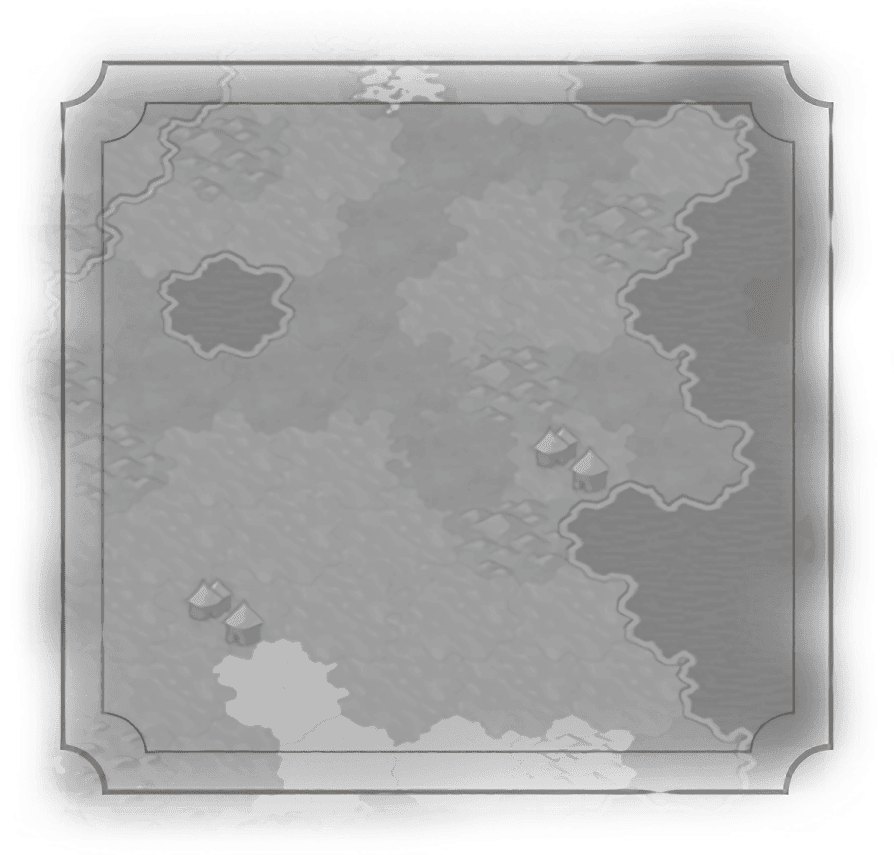Improvements
Airstrip
Alcázar
Barricade
Batey
Cahokia Mounds
Camp
Château
Chemamull
City Park
Colossal Head
Corporation
Farm
Feitoria
Fishery
Fishing Boats
Fort
Geothermal Plant
Golf Course
Great Wall
Hacienda
Ice Hockey Rink
Industry
Kampung
Kurgan
Lumber Mill
Mahavihara
Mekewap
Mine
Missile Silo
Mission
Moai
Modernized Trap
Monastery
Mountain Tunnel
Nazca Line
Nubian Pyramid
Offshore Oil Rig
Offshore Wind Farm
Oil Well
Open-Air Museum
Outback Station
Pā
Pairidaeza
Pasture
Plantation
Polder
Qhapaq Ñan
Quarry
Reinforced Barricade
Rock-Hewn Church
Roman Fort
Seaside Resort
Seastead
Ski Resort
Solar Farm
Sphinx
Stepwell
Terrace Farm
Trading Dome
Trap
Vampire Castle
Wind Farm
Ziggurat
Routes


Batey
Description
Unlocks the Builder ability to construct a Batey.
+1 Culture. +1
Culture. +1  Culture for every adjacent Bonus Resource and Entertainment Complex (increased to +2
Culture for every adjacent Bonus Resource and Entertainment Complex (increased to +2  Culture when Exploration is discovered). Provides
Culture when Exploration is discovered). Provides  Tourism after researching Flight. Cannot be built adjacent to another Batey or on Hills.
Tourism after researching Flight. Cannot be built adjacent to another Batey or on Hills.
+1
 Culture. +1
Culture. +1  Culture for every adjacent Bonus Resource and Entertainment Complex (increased to +2
Culture for every adjacent Bonus Resource and Entertainment Complex (increased to +2  Culture when Exploration is discovered). Provides
Culture when Exploration is discovered). Provides  Tourism after researching Flight. Cannot be built adjacent to another Batey or on Hills.
Tourism after researching Flight. Cannot be built adjacent to another Batey or on Hills.Historical Context
The Mesoamerican ball game, called in Mexico “ulama,” is ancient. While it was likely invented by the Olmec several thousand years ago, it became popular in the first millennium A.D., spreading beyond its Mesoamerican origins and into North America and the Caribbean. In its Mayan versions, it involved getting a rubber ball through a stone ring (perhaps representing the sun in its journeys through the underworld) without using one’s hands. The players were often war captives, and the losers could be sacrificed to the gods. Images of such sacrifices are clearly shown on the walls of the Maya ball courts at Chichén Itzá.
The bateyes at Caguana in Puerto Rico are no such grand affairs. Here, they are roughly rectangular, flat pitches without the stone rings that characterize Mayan courts. The rules, then, were likely different, involving throwing the ball between teams, but the link between the court and religious life remained – Caguana’s bateyes are decorated with petroglyphs (stone carvings) and are clustered around the base of a mountain that was the center of Taíno religious life in Puerto Rico.
The Taíno word “batey” has had a bad afterlife in the years since colonization. While the word originally means “ball court,” it is now widely used to refer to temporary housing for workers on sugar plantations, both enslaved peoples on historical plantations and present-day workers, many of whom are still forced into involuntary labor. It is unclear how the Taíno word for ball court has come to refer to something so different; here, “batey” refers to the original meaning of the word.
The bateyes at Caguana in Puerto Rico are no such grand affairs. Here, they are roughly rectangular, flat pitches without the stone rings that characterize Mayan courts. The rules, then, were likely different, involving throwing the ball between teams, but the link between the court and religious life remained – Caguana’s bateyes are decorated with petroglyphs (stone carvings) and are clustered around the base of a mountain that was the center of Taíno religious life in Puerto Rico.
The Taíno word “batey” has had a bad afterlife in the years since colonization. While the word originally means “ball court,” it is now widely used to refer to temporary housing for workers on sugar plantations, both enslaved peoples on historical plantations and present-day workers, many of whom are still forced into involuntary labor. It is unclear how the Taíno word for ball court has come to refer to something so different; here, “batey” refers to the original meaning of the word.

Traits
Unique To
+1  Culture
Culture
 Culture
CultureAdjacency Bonus
+1  Culture from each adjacent Entertainment Complex tile.Becomes obsolete with Exploration.
Culture from each adjacent Entertainment Complex tile.Becomes obsolete with Exploration.
 Culture from each adjacent Entertainment Complex tile.Becomes obsolete with Exploration.
Culture from each adjacent Entertainment Complex tile.Becomes obsolete with Exploration.+2  Culture from each adjacent Entertainment Complex tile.Requires Exploration.
Culture from each adjacent Entertainment Complex tile.Requires Exploration.
 Culture from each adjacent Entertainment Complex tile.Requires Exploration.
Culture from each adjacent Entertainment Complex tile.Requires Exploration.+1  Culture from each adjacent Bonus Resource tile.Becomes obsolete with Exploration.
Culture from each adjacent Bonus Resource tile.Becomes obsolete with Exploration.
 Culture from each adjacent Bonus Resource tile.Becomes obsolete with Exploration.
Culture from each adjacent Bonus Resource tile.Becomes obsolete with Exploration.+2  Culture from each adjacent Bonus Resource tile.Requires Exploration.
Culture from each adjacent Bonus Resource tile.Requires Exploration.
 Culture from each adjacent Bonus Resource tile.Requires Exploration.
Culture from each adjacent Bonus Resource tile.Requires Exploration.
Description
Unlocks the Builder ability to construct a Batey.
+1 Culture. +1
Culture. +1  Culture for every adjacent Bonus Resource and Entertainment Complex (increased to +2
Culture for every adjacent Bonus Resource and Entertainment Complex (increased to +2  Culture when Exploration is discovered). Provides
Culture when Exploration is discovered). Provides  Tourism after researching Flight. Cannot be built adjacent to another Batey or on Hills.
Tourism after researching Flight. Cannot be built adjacent to another Batey or on Hills.
+1
 Culture. +1
Culture. +1  Culture for every adjacent Bonus Resource and Entertainment Complex (increased to +2
Culture for every adjacent Bonus Resource and Entertainment Complex (increased to +2  Culture when Exploration is discovered). Provides
Culture when Exploration is discovered). Provides  Tourism after researching Flight. Cannot be built adjacent to another Batey or on Hills.
Tourism after researching Flight. Cannot be built adjacent to another Batey or on Hills.Historical Context
The Mesoamerican ball game, called in Mexico “ulama,” is ancient. While it was likely invented by the Olmec several thousand years ago, it became popular in the first millennium A.D., spreading beyond its Mesoamerican origins and into North America and the Caribbean. In its Mayan versions, it involved getting a rubber ball through a stone ring (perhaps representing the sun in its journeys through the underworld) without using one’s hands. The players were often war captives, and the losers could be sacrificed to the gods. Images of such sacrifices are clearly shown on the walls of the Maya ball courts at Chichén Itzá.
The bateyes at Caguana in Puerto Rico are no such grand affairs. Here, they are roughly rectangular, flat pitches without the stone rings that characterize Mayan courts. The rules, then, were likely different, involving throwing the ball between teams, but the link between the court and religious life remained – Caguana’s bateyes are decorated with petroglyphs (stone carvings) and are clustered around the base of a mountain that was the center of Taíno religious life in Puerto Rico.
The Taíno word “batey” has had a bad afterlife in the years since colonization. While the word originally means “ball court,” it is now widely used to refer to temporary housing for workers on sugar plantations, both enslaved peoples on historical plantations and present-day workers, many of whom are still forced into involuntary labor. It is unclear how the Taíno word for ball court has come to refer to something so different; here, “batey” refers to the original meaning of the word.
The bateyes at Caguana in Puerto Rico are no such grand affairs. Here, they are roughly rectangular, flat pitches without the stone rings that characterize Mayan courts. The rules, then, were likely different, involving throwing the ball between teams, but the link between the court and religious life remained – Caguana’s bateyes are decorated with petroglyphs (stone carvings) and are clustered around the base of a mountain that was the center of Taíno religious life in Puerto Rico.
The Taíno word “batey” has had a bad afterlife in the years since colonization. While the word originally means “ball court,” it is now widely used to refer to temporary housing for workers on sugar plantations, both enslaved peoples on historical plantations and present-day workers, many of whom are still forced into involuntary labor. It is unclear how the Taíno word for ball court has come to refer to something so different; here, “batey” refers to the original meaning of the word.
Traits
Unique To
+1  Culture
Culture
 Culture
CultureAdjacency Bonus
+1  Culture from each adjacent Entertainment Complex tile.Becomes obsolete with Exploration.
Culture from each adjacent Entertainment Complex tile.Becomes obsolete with Exploration.
 Culture from each adjacent Entertainment Complex tile.Becomes obsolete with Exploration.
Culture from each adjacent Entertainment Complex tile.Becomes obsolete with Exploration.+2  Culture from each adjacent Entertainment Complex tile.Requires Exploration.
Culture from each adjacent Entertainment Complex tile.Requires Exploration.
 Culture from each adjacent Entertainment Complex tile.Requires Exploration.
Culture from each adjacent Entertainment Complex tile.Requires Exploration.+1  Culture from each adjacent Bonus Resource tile.Becomes obsolete with Exploration.
Culture from each adjacent Bonus Resource tile.Becomes obsolete with Exploration.
 Culture from each adjacent Bonus Resource tile.Becomes obsolete with Exploration.
Culture from each adjacent Bonus Resource tile.Becomes obsolete with Exploration.+2  Culture from each adjacent Bonus Resource tile.Requires Exploration.
Culture from each adjacent Bonus Resource tile.Requires Exploration.
 Culture from each adjacent Bonus Resource tile.Requires Exploration.
Culture from each adjacent Bonus Resource tile.Requires Exploration.


